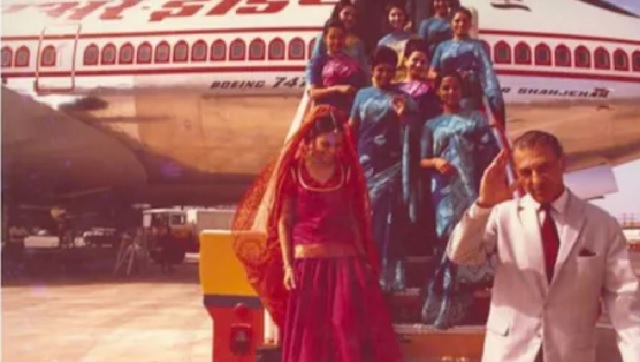With the Narendra Modi government making an official announcement that the Tata Group has again become the ‘Maharaja’ of Indian skies, India’s aviation story seems to have come full circle. For, the country’s aviation story began with the Tatas when Tata Airlinkvjes was formed in 1932 under the leadership of JRD Tata, who was a visionary and through his sheer hard work, dedication and innovation ensured that the airline not just took off by registering unprecedented profits, but also becoming a global brand of repute by redefining style, comfort and high-class on-board service. Its airhostesses in their exotic silk saris became a global phenomenon. JRD had vigorously opposed then Prime Minister Jawaharlal Nehru’s plan to nationalise private civil aviation. But in 1953, the state took over Tata Airlines along with seven other domestic airlines and rebranded them as Indian Airlines, while Air India International was named Air India. The government, however, was courteous enough to invite JRD to lead both Air India and Indian Airlines. He gracefully accepted the offer. I am a second-generation Air Indian. My father, who was in charge of Industrial Relations, had worked closely with JRD and other CMDs. He would vouch for JRD’s vision, integrity, aesthetics and hard work. JRD had a keen eye for the minutest details and would keep a close tab on the working of the airlines. We were told how, on seeing the aircraft toilet dirty, he would take it upon himself to clean it. Aviation was his dream, so much so that he would later admit that he gave nearly 50 percent of his time to Air India. The crew would be on their toes when he was on board. In 1978, when the Morarji Desai government summarily removed JRD without any notice from the chairmanship of Air India and the directorship of Indian Airlines, Indira Gandhi, then in the Opposition, wrote to him, saying: “You were not merely the chairman but the founder and nurturer who felt deep personal concern. It was this and the meticulous care that you gave to the smallest detail, including the decor and the saris of the hostesses, which raised Air India to the international level and indeed to the top of the list.” This was a perfect tribute to India’s foremost aviation man. JRD was a man of vision. Malaysian Airlines, Singapore Airlines, Nigerian Airlines — they all grew thanks to Air India and their experienced staff who imparted the training or joined them after retirement. We gave them training. Singapore Airlines, when it started, would work hard to poach our pilots, cabin crew, technicians and ground staff. So much so that the Government of India had to get into an agreement with Singapore Airlines that they would not poach and agreed to give them staff on deputation for two years. We had the best training schools for cabin crew, pilots, ground staff and engineers. Air India would stand out anywhere in the world. The silk saris worn by our women were the best. Men’s dressing/uniforms were perfect and immaculate. We had the best tailors of Bombay stitching our uniforms. Air India’s downfall started by late 1970s and early 80s when political appointments started happening in a big way. Employees and management both were responsible for the downfall. If you read Tata’s report which they released 15 days back, it has identified several flaws in the airlines. One of them being the excessive price paid for the 787 aircraft and the overstaffed management. So, political and corporate corruption played its part in Air India’s downfall. And then, of course, some employees too didn’t act responsibly. I remember one of them had not reported to work for four years and when his salary was withheld he had the audacity to knock the court’s doors! Air India has been run like a fiefdom. The flight safety standards started slipping too. When I look back, I see three things that stand out for the Tatas: Their ethics, work culture and philanthropy. Of course, if someone was not performing well, he would lose his job, but overall the approach was liberal and humane. The management looked at employees with respect and the employees were loyal to the company .It would, however, not be easy for Ratan Tata to clean the rot that has set in. We are happy that a man with vision has taken over Air India. Tatas have a track record of delivering and turning companies around. The Jaguar Land Rover (JLR) turnaround is working only because of them. But bringing Air India back on track would be challenging. For instance, many of the board members are political appointees. It will be a formidable task and will take Ratan Tata to be at his best to make the airlines fly again. I, like many of my former and present colleagues, want him to succeed. And succeed well in bringing back the airlines to what it was known earlier: “Your palace in the sky”. KVJ Rao is a former Air India employee.
Air India flew like ‘Maharaja’ under JRD Tata's leadership, but this time it won’t be easy
KVJ Rao
• October 9, 2021, 17:13:54 IST
Under JRD Tata, Air India redefined style, comfort and high-class on-board service. Its airhostesses in their exotic silk saris were a global phenomenon
Advertisement
)
End of Article